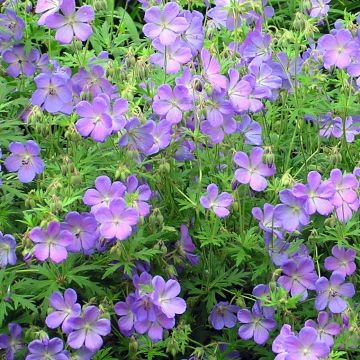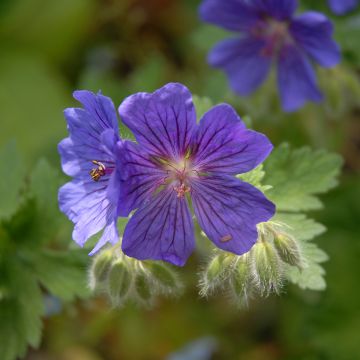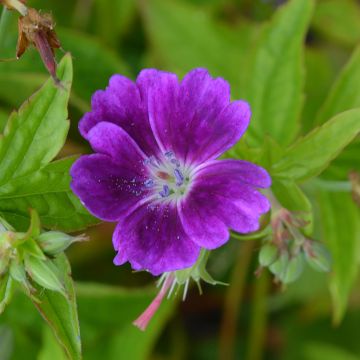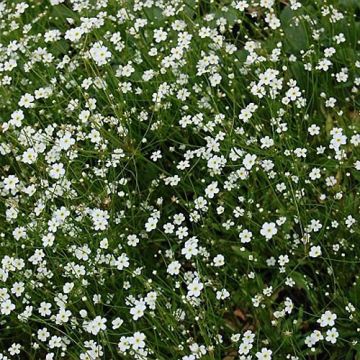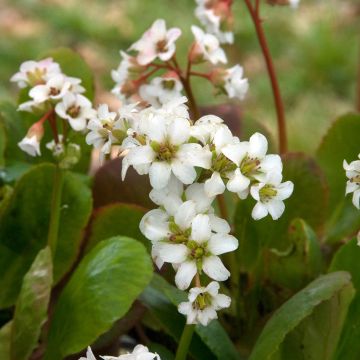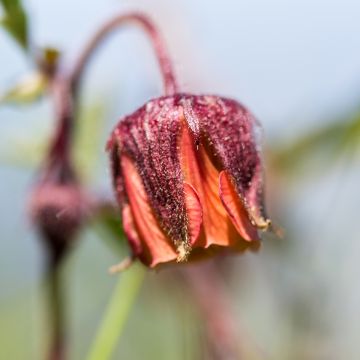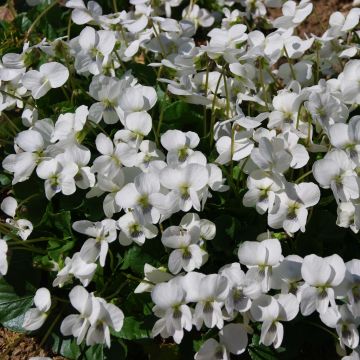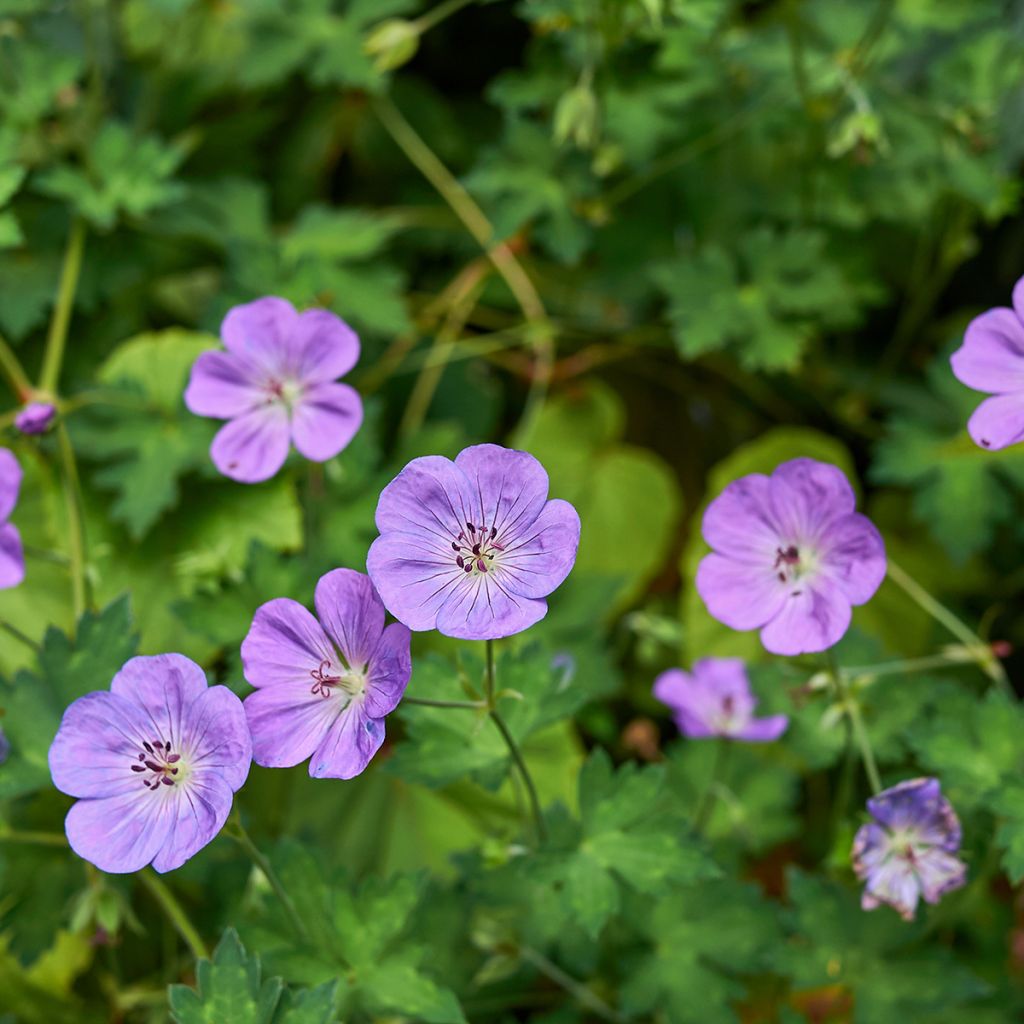

Geranium himalayense - Himalayan Cranesbill


Geranium himalayense - Himalayan Cranesbill
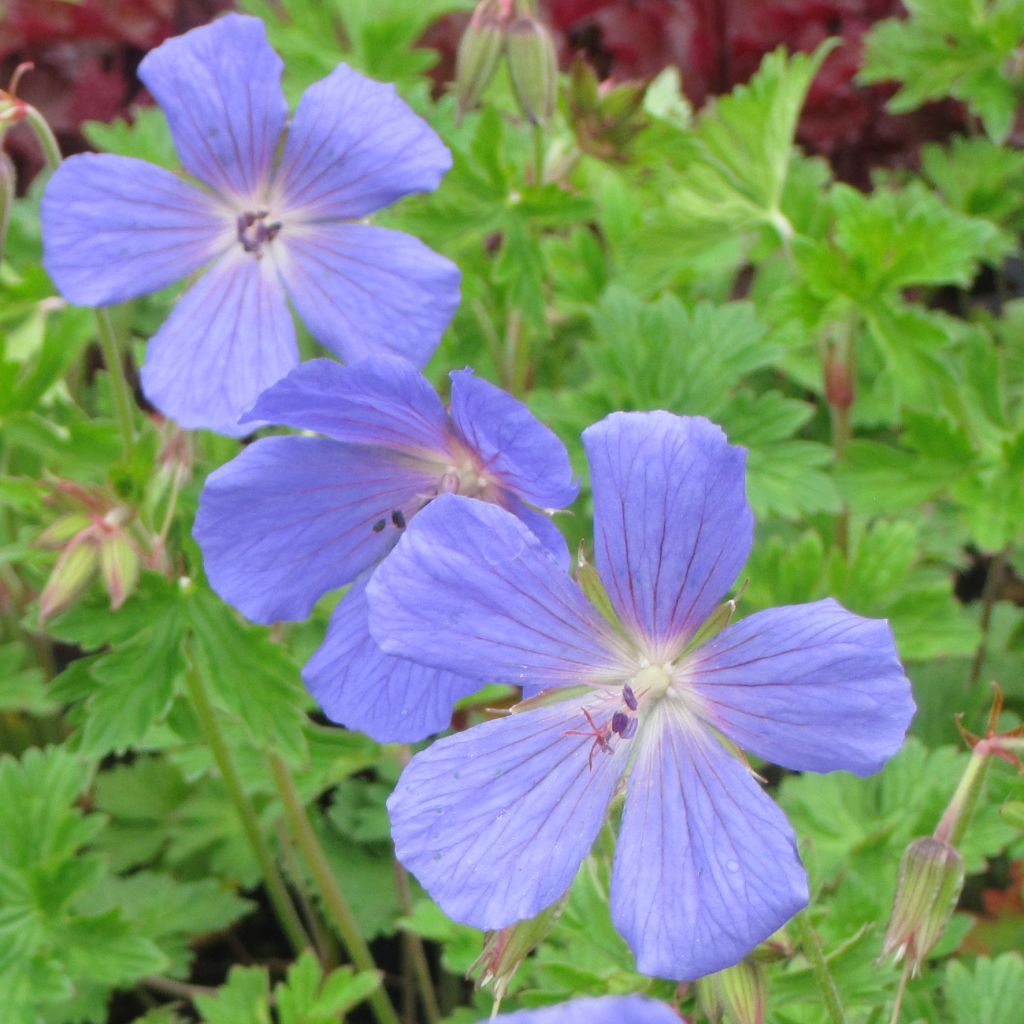

Geranium himalayense - Himalayan Cranesbill
Geranium himalayense - Himalayan Cranesbill
Geranium himalayense
Himalayan Cranesbill, Hardy Geranium
This item cannot be shipped to the selected country
Delivery charge from €5.90
More information
Schedule delivery date,
and select date in basket
This plant carries a 12 months recovery warranty
More information
We guarantee the quality of our plants for a full growing cycle, and will replace at our expense any plant that fails to recover under normal climatic and planting conditions.
From €5.90 for pickup delivery and €6.90 for home delivery
Express home delivery from €8.90.
Does this plant fit my garden?
Set up your Plantfit profile →
Description
This perennial Himalayan geranium, also known as Himalayan cranesbill, bears deep blue-violet flowers in summer, and sporadically again in autumn, which turn pink-violet towards the centre, illuminated by a white heart. This vigorous plant forms beautiful dense and spreading cushions, with finely cut foliage and prominent veins. It makes excellent ground cover and is a charming plant, slowly spreading thanks to its underground rhizomes. It gracefully withstands winter cold and occasional drought, showing little fussiness over soil type.
The Himalayan geranium belongs to the Geraniaceae family. It is native to the Himalayan mountains. It forms a wide and dense cushion, with a regular dome shape, reaching a height of 40 cm (16in) and a diameter of 50 cm (20in). Flowering begins at the end of May, peaks in June, continues into July, and slows down in August. From September to October, the flowers sporadically reappear, depending on the climate. The flowers, grouped in clusters, are round and open cups, measuring 5 cm (2in) in diameter, of a beautiful cornflower blue to blue-violet colour and a white heart surrounded by a pink-purple zone. The overall effect is fresh and bright. The deciduous foliage consists of large hairy leaves with prominent veins, medium green in colour, ranging from 5 to 20 cm (2 to 8in) long including the petiole. The plant has a specific root system, with a central and single taproot, and a few large fibrous secondary roots.
Like many of its relatives, the Himalayan cranesbill is well suited for natural gardens, providing a valuable food source for numerous insects such as butterflies, bees, and bumblebees. It is therefore an ideal plant for cottage gardens, rockeries, and borders. It also pairs well with old-fashioned roses and peonies. Combine it with a silvery carpet of snow-in-summer (Cerastium tomentosum), and with creeping bugleweed with purple foliage - these simple plants will enhance its dome of flowers. It also grows well in large pots, with regular watering and fertilisation.
Report an error about the product description
Geranium himalayense - Himalayan Cranesbill in pictures




Flowering
Foliage
Plant habit
Botanical data
Geranium
himalayense
Geraniaceae
Himalayan Cranesbill, Hardy Geranium
Himalayas
Other Hardy Geranium - Cranesbill
Planting and care
This perennial geranium enjoys the sun as long as it is never scorching, or partial or light shade. Install it in ordinary, fresh, humus-bearing soil, not too acidic, well-drained. In clay ground it is preferable to lighten the soil with coarse sand or leaf compost. It particularly dreads waterlogged soil during when young, especially in winter. This species tolerates occasional drought periods, which will then halt flowering. Plant it early in spring or in autumn. Water regularly to help the young plants establish. Regularly removing faded flowers can encourage reblooming. The clumps can be divided every three years, also in spring. This easy-going plant requires little maintenance.
Planting period
Intended location
Care
-
, onOrder confirmed
Reply from on Promesse de fleurs
Spring flowering perennials
Haven't found what you were looking for?
Hardiness is the lowest winter temperature a plant can endure without suffering serious damage or even dying. However, hardiness is affected by location (a sheltered area, such as a patio), protection (winter cover) and soil type (hardiness is improved by well-drained soil).

Photo Sharing Terms & Conditions
In order to encourage gardeners to interact and share their experiences, Promesse de fleurs offers various media enabling content to be uploaded onto its Site - in particular via the ‘Photo sharing’ module.
The User agrees to refrain from:
- Posting any content that is illegal, prejudicial, insulting, racist, inciteful to hatred, revisionist, contrary to public decency, that infringes on privacy or on the privacy rights of third parties, in particular the publicity rights of persons and goods, intellectual property rights, or the right to privacy.
- Submitting content on behalf of a third party;
- Impersonate the identity of a third party and/or publish any personal information about a third party;
In general, the User undertakes to refrain from any unethical behaviour.
All Content (in particular text, comments, files, images, photos, videos, creative works, etc.), which may be subject to property or intellectual property rights, image or other private rights, shall remain the property of the User, subject to the limited rights granted by the terms of the licence granted by Promesse de fleurs as stated below. Users are at liberty to publish or not to publish such Content on the Site, notably via the ‘Photo Sharing’ facility, and accept that this Content shall be made public and freely accessible, notably on the Internet.
Users further acknowledge, undertake to have ,and guarantee that they hold all necessary rights and permissions to publish such material on the Site, in particular with regard to the legislation in force pertaining to any privacy, property, intellectual property, image, or contractual rights, or rights of any other nature. By publishing such Content on the Site, Users acknowledge accepting full liability as publishers of the Content within the meaning of the law, and grant Promesse de fleurs, free of charge, an inclusive, worldwide licence for the said Content for the entire duration of its publication, including all reproduction, representation, up/downloading, displaying, performing, transmission, and storage rights.
Users also grant permission for their name to be linked to the Content and accept that this link may not always be made available.
By engaging in posting material, Users consent to their Content becoming automatically accessible on the Internet, in particular on other sites and/or blogs and/or web pages of the Promesse de fleurs site, including in particular social pages and the Promesse de fleurs catalogue.
Users may secure the removal of entrusted content free of charge by issuing a simple request via our contact form.
The flowering period indicated on our website applies to countries and regions located in USDA zone 8 (France, the United Kingdom, Ireland, the Netherlands, etc.)
It will vary according to where you live:
- In zones 9 to 10 (Italy, Spain, Greece, etc.), flowering will occur about 2 to 4 weeks earlier.
- In zones 6 to 7 (Germany, Poland, Slovenia, and lower mountainous regions), flowering will be delayed by 2 to 3 weeks.
- In zone 5 (Central Europe, Scandinavia), blooming will be delayed by 3 to 5 weeks.
In temperate climates, pruning of spring-flowering shrubs (forsythia, spireas, etc.) should be done just after flowering.
Pruning of summer-flowering shrubs (Indian Lilac, Perovskia, etc.) can be done in winter or spring.
In cold regions as well as with frost-sensitive plants, avoid pruning too early when severe frosts may still occur.
The planting period indicated on our website applies to countries and regions located in USDA zone 8 (France, United Kingdom, Ireland, Netherlands).
It will vary according to where you live:
- In Mediterranean zones (Marseille, Madrid, Milan, etc.), autumn and winter are the best planting periods.
- In continental zones (Strasbourg, Munich, Vienna, etc.), delay planting by 2 to 3 weeks in spring and bring it forward by 2 to 4 weeks in autumn.
- In mountainous regions (the Alps, Pyrenees, Carpathians, etc.), it is best to plant in late spring (May-June) or late summer (August-September).
The harvesting period indicated on our website applies to countries and regions in USDA zone 8 (France, England, Ireland, the Netherlands).
In colder areas (Scandinavia, Poland, Austria...) fruit and vegetable harvests are likely to be delayed by 3-4 weeks.
In warmer areas (Italy, Spain, Greece, etc.), harvesting will probably take place earlier, depending on weather conditions.
The sowing periods indicated on our website apply to countries and regions within USDA Zone 8 (France, UK, Ireland, Netherlands).
In colder areas (Scandinavia, Poland, Austria...), delay any outdoor sowing by 3-4 weeks, or sow under glass.
In warmer climes (Italy, Spain, Greece, etc.), bring outdoor sowing forward by a few weeks.



































